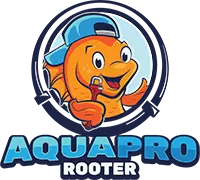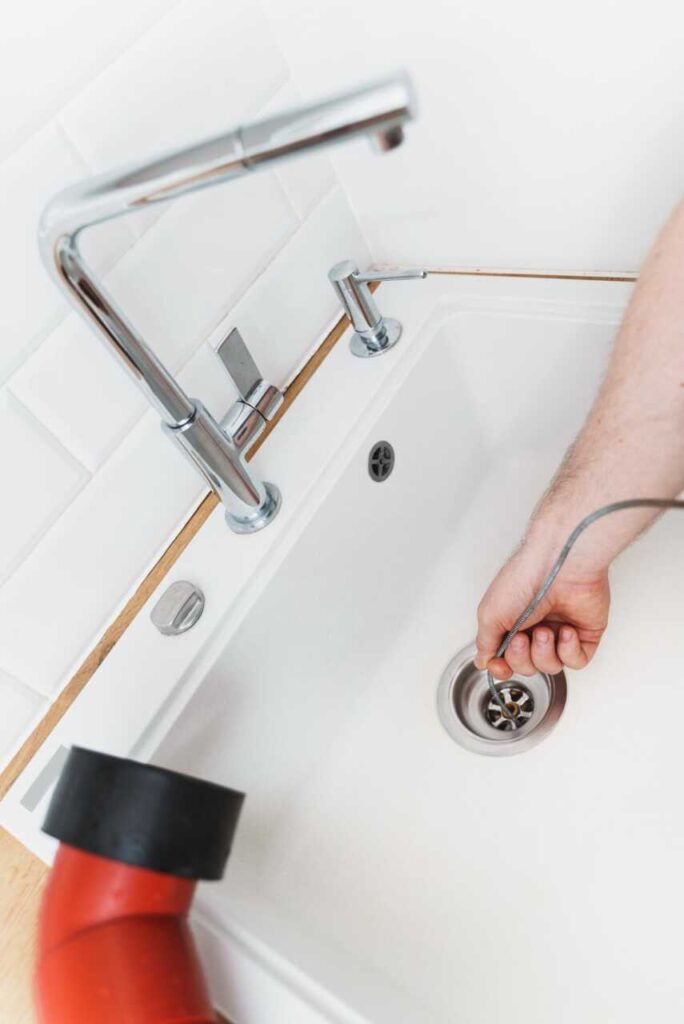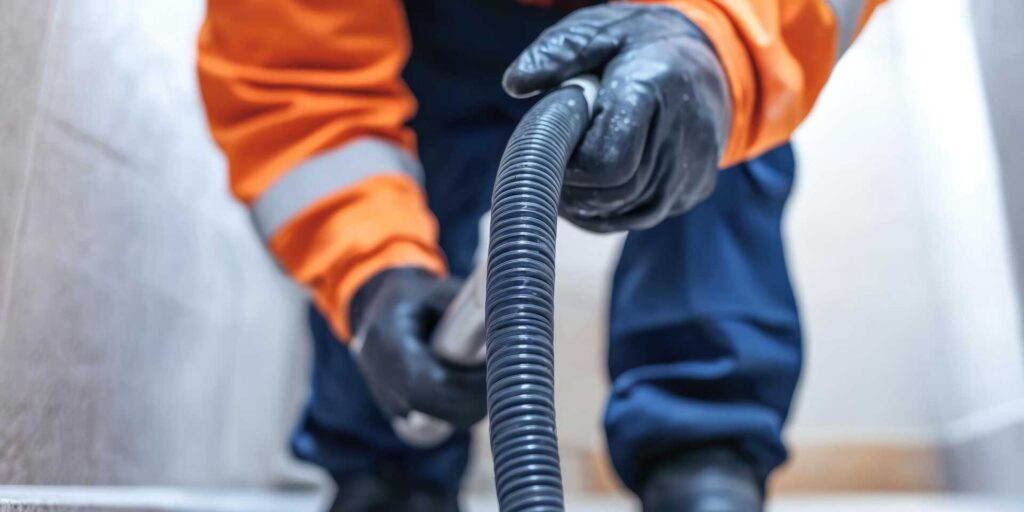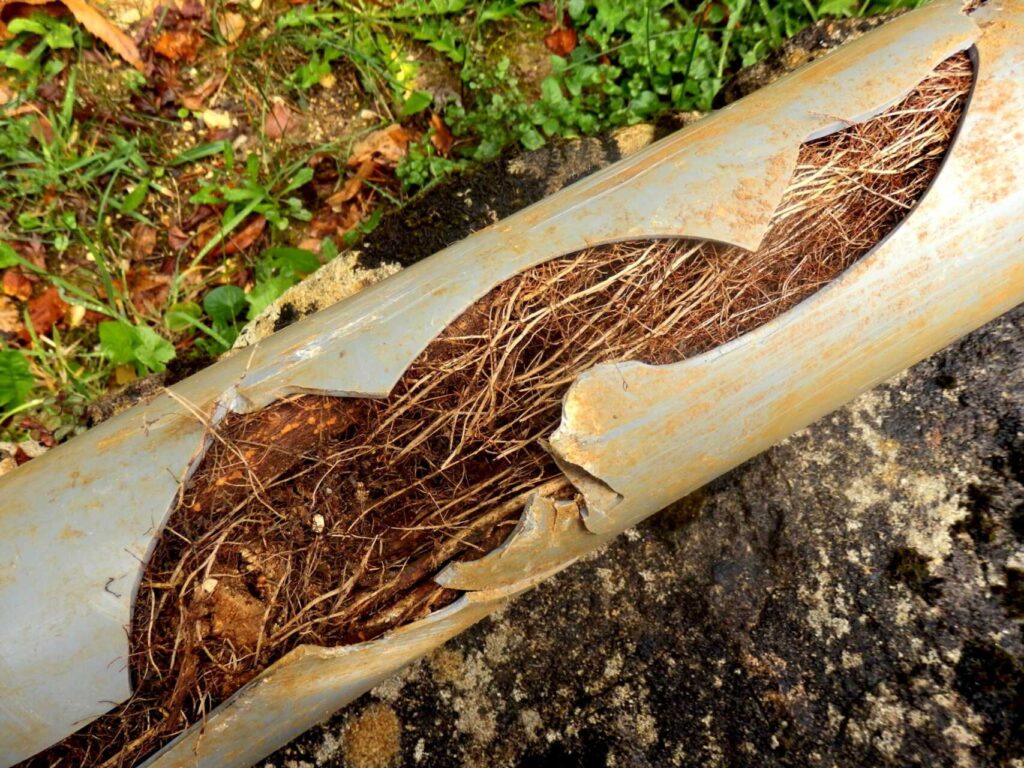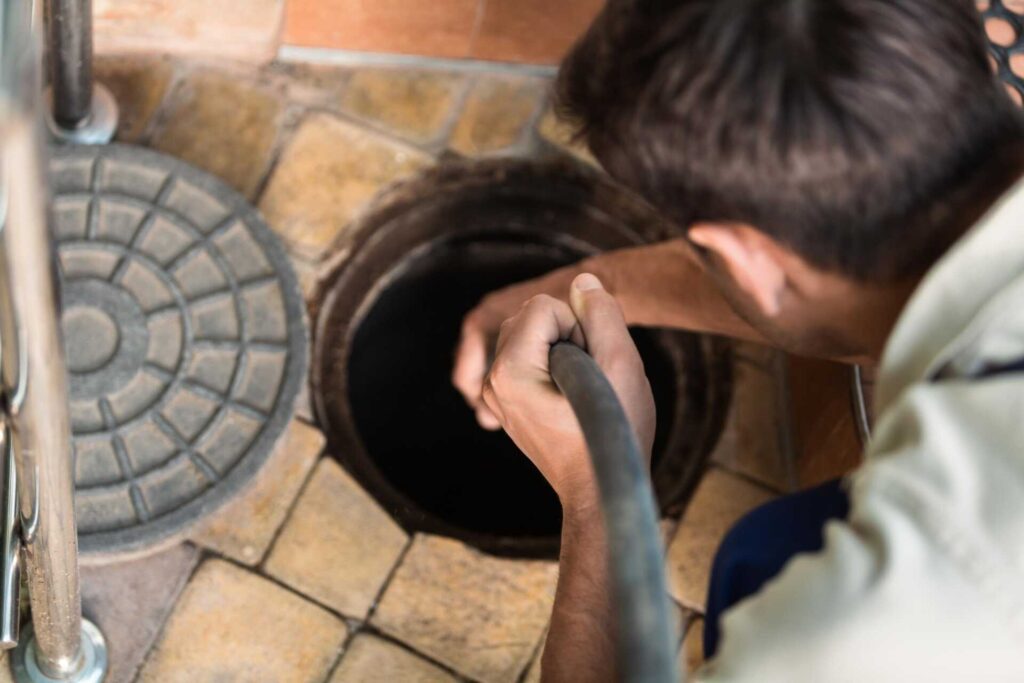
Contents
Understanding effective hydro jetting techniques can be essential for tackling persistent drainage problems. By using high-pressure water jets, you can clear blockages and enhance the overall health of your plumbing. However, choosing the right equipment and methods isn’t always straightforward. What specific techniques and safety considerations should you keep in mind to maximize the benefits of hydro jetting?
Key Takeaways
- Select the appropriate nozzle type based on the specific blockage to optimize water flow and cleaning efficiency.
- Adjust pressure settings between 1,500 and 4,000 psi to effectively tackle different levels of clogs and debris.
- Ensure thorough equipment maintenance and check for wear before starting the hydro jetting process.
- Utilize safety gear, including gloves and eye protection, to prevent injuries from high-pressure water and debris.
- Regularly schedule hydro jetting as part of routine maintenance to prevent future clogs and enhance plumbing system health.
Understanding Hydro Jetting
When you’re dealing with stubborn clogs and slow drainage, understanding hydro jetting can be a game-changer. This powerful drain cleaning method utilizes high-pressure water jets to clear out debris, grease, and even tree roots from your pipes. Unlike traditional methods, hydro jetting offers a thorough clean, restoring your plumbing system’s efficiency.
One of the key hydro jetting benefits is its ability to handle even the toughest blockages. The high-pressure water effectively breaks down buildup that other methods might miss. This clears the immediate issue and helps prevent future clogs, saving you time and money in the long run.
However, there are some hydro jetting myths that can lead to misconceptions. For instance, many believe that hydro jetting can damage pipes. In reality, when performed by a professional, it’s safe for most types of pipes, including older systems. It’s important to have a skilled technician assess your plumbing before proceeding to verify it’s appropriate for your specific situation.
Another common myth is that hydro jetting is only for severe clogs. While it excels in those scenarios, it can also be a proactive solution for routine maintenance. By incorporating hydro jetting into your home maintenance routine, you can enjoy cleaner pipes and improved drainage.
In short, understanding hydro jetting is vital for effective drain cleaning. By recognizing its benefits and debunking common myths, you can make informed decisions for your plumbing needs.
Equipment Used in Hydro Jetting
Effective hydro jetting relies on specialized equipment designed to deliver high-pressure water with precision. At the core of hydro jetting are the water jetting machines, which generate water pressures ranging from 1,500 to 4,000 psi or more. These machines come in various sizes and capacities, allowing you to select the right one for your specific drain cleaning needs.
You’ll find two primary equipment types: trailer-mounted and portable units. Trailer-mounted machines are powerful and suited for larger jobs, typically used by professionals. They can handle extensive systems and are ideal for commercial applications. On the other hand, portable units are lightweight and designed for residential use, allowing you to tackle smaller clogs and blockages efficiently.
Another essential component is the hose used in hydro jetting. Made from durable materials, these hoses can withstand high pressures without bursting. You’ll also need specialized nozzles, which play a critical role in directing the water flow. Different nozzle designs, such as rotating or multi-directional, provide versatility, ensuring you can effectively remove grease, debris, and tree roots from pipes.
Finally, don’t overlook safety gear. As you work with high-pressure equipment, protective eyewear, gloves, and proper clothing are important to safeguard against potential hazards. Understanding the equipment types and their functions will empower you to execute hydro jetting effectively, ensuring your drains remain clear and functional.
Steps for Effective Hydro Jetting
To achieve effective hydro jetting, you need to focus on three key areas: equipment preparation, safety precautions, and a step-by-step process. Ensuring your equipment is ready and following safety measures are essential for a successful operation. Let’s break down each of these components for ideal results.
Equipment Preparation Essentials
Proper equipment preparation is essential for successful hydro jetting, and following a systematic approach can make all the difference. Start by verifying your equipment is well-maintained. Regularly check your jetting machine for any wear and tear, focusing on hoses, connections, and filters. A well-maintained machine enhances performance and prolongs its lifespan.
Next, nozzle selection is critical. Choose the right nozzle based on the type of blockage you’re facing. For example, a rotating nozzle works wonders on stubborn clogs, while a flat nozzle can efficiently clear debris in larger pipes. Having a variety of nozzles on hand allows you to tackle different challenges effectively.
Before you begin, familiarize yourself with the pressure settings. Adjust these according to the specific job requirements, as too much pressure can damage pipes, while too little may not clear blockages effectively. Finally, gather all necessary accessories, such as safety gear and drain cleaning rods, to verify you’re fully prepared.
Safety Precautions Required
While hydro jetting can be an efficient method for clearing drains, prioritizing safety is vital to prevent accidents and injuries. Before starting, conduct a thorough risk evaluation to identify potential hazards in your work environment. This evaluation should include checking for nearby electrical lines, evaluating the stability of the work area, and ensuring proper ventilation, especially in confined spaces.
Implementing the right safety measures is essential. Always wear appropriate personal protective equipment (PPE), such as gloves, goggles, and a hard hat, to protect yourself from debris and high-pressure water. Make sure your equipment is in good condition, and double-check all connections to prevent leaks or bursts during operation.
Additionally, confirm that you have a clear exit route in case of emergencies. Familiarize yourself with the equipment’s operation manual and adhere to manufacturer guidelines. If you’re working in a team, communicate effectively to coordinate tasks and maintain safety protocols. Remember, safety isn’t just about following rules; it’s about fostering a culture where everyone feels responsible for protecting each other. Taking these precautions will help you perform hydro jetting safely and efficiently.
Step-by-Step Process
Before you start hydro jetting, understanding the step-by-step process is essential for achieving effective results. Follow these steps to ensure your drain cleaning methods are efficient and safe.
| Step | Action | Purpose |
|---|---|---|
| 1 | Evaluate the Drain | Identify blockages and issues |
| 2 | Prepare Equipment | Gather hydro jetting tools |
| 3 | Access the Drain | Remove any covers or obstacles |
| 4 | Insert Jetting Hose | Position the hose at the drain |
| 5 | Begin Hydro Jetting | Clear blockages with high pressure |
Begin by evaluating the drain to identify any specific issues. Next, prepare your equipment, ensuring you have the right hydro jetting techniques and tools on hand. Access the drain by removing any necessary covers, then carefully insert the jetting hose into the drain. Finally, activate the hydro jetting system to effectively clear blockages with high-pressure water.
Benefits of Hydro Jetting
Hydro jetting offers a powerful solution for maintaining and restoring the efficiency of your plumbing system. This technique utilizes high-pressure water jets to clear stubborn blockages and debris from your pipes, ensuring optimal flow. One of the most significant benefits of hydro jetting is the potential for cost savings. By effectively removing clogs and buildup, you can prevent more severe plumbing issues that often require costly repairs or replacements. Regular hydro jetting can help you avoid emergency calls and expensive interventions, allowing you to allocate your resources more effectively.
Moreover, hydro jetting provides notable environmental benefits. Unlike traditional chemical drain cleaners that can harm your pipes and the environment, hydro jetting relies solely on water to clear obstructions. This eco-friendly approach minimizes the risk of toxic runoff and reduces your carbon footprint. By opting for hydro jetting, you contribute to a healthier ecosystem while ensuring your plumbing system functions correctly.
Additionally, hydro jetting clears existing blockages and helps prevent future issues by thoroughly cleaning the interior surfaces of your pipes. This proactive maintenance approach keeps your plumbing system in peak condition, fostering a sense of community and responsibility among homeowners.
Common Applications for Hydro Jetting
When dealing with persistent clogs or slow drainage, hydro jetting proves to be an effective method for a variety of plumbing issues. This powerful technique uses high-pressure water jets to clear blockages and restore flow in pipes, making it suitable for both residential plumbing and commercial applications.
In residential settings, you might encounter stubborn clogs caused by grease buildup, tree roots, or mineral deposits. Hydro jetting can effectively eliminate these blockages, ensuring your home’s plumbing system functions smoothly. It’s particularly useful for older homes where pipe degradation can exacerbate drainage problems. By using hydro jetting, you clear existing clogs and help prevent future issues from arising.
For commercial applications, hydro jetting is invaluable in maintaining the efficiency of complex plumbing systems found in restaurants, hotels, and office buildings. These establishments often deal with heavy usage and specific waste materials that can lead to severe clogs. Hydro jetting can quickly address these challenges, minimizing downtime and ensuring that business operations run seamlessly.
Additionally, hydro jetting is a proactive solution for routine maintenance. By scheduling regular hydro jetting services, you can keep your plumbing system in top condition, reducing the risk of emergencies. Whether you’re managing a bustling restaurant or maintaining your family home, hydro jetting stands out as a reliable choice for effective drain cleaning. Embracing this technique supports your immediate plumbing needs and fosters long-term health for your entire system.
Safety Considerations in Hydro Jetting
When engaging in hydro jetting, wearing appropriate protective gear is essential to safeguard against high-pressure water and potential debris. You must also follow strict equipment handling precautions to minimize risks during operation. Understanding these safety considerations will help ensure a more secure and effective drain-cleaning process.
Protective Gear Requirements
Proper protective gear is crucial for anyone involved in hydro jetting. It safeguards against the high-pressure water and debris that can be expelled during the process. When operating a hydro jet, you need to verify that you’re adequately equipped to prevent injuries. Start with sturdy protective gloves. These should be resistant to cuts and punctures while providing a secure grip. They will also protect your hands from sharp objects and the intense pressure of the water.
Next, don’t underestimate the significance of eye protection. High-velocity water can carry debris that may cause serious eye injuries. Using safety goggles or a full-face shield will help keep your eyes safe from flying particles and water spray.
Additionally, consider wearing a hard hat, especially in environments where overhead hazards exist. Steel-toed boots can also provide crucial protection against heavy equipment and falling debris. By donning the right protective gear, you contribute to a safer work environment, allowing you to focus on the task at hand without unnecessary distractions or risks. Remember, safety isn’t just a personal responsibility; it’s a commitment to yourself and your team.
Equipment Handling Precautions
Although hydro jetting is an effective method for drain cleaning, handling the equipment requires strict adherence to safety precautions. First, verify you’ve undergone proper operator training; this is essential for understanding how to operate the equipment safely and efficiently. Familiarize yourself with the specific features of your hydro jetting machine, as each model may have unique requirements.
Regular equipment maintenance is another significant aspect. Before each use, inspect hoses and fittings for wear or damage that could lead to dangerous situations during operation. Confirm all connections are secure to prevent accidental disconnections under pressure.
When setting up, always position the equipment on stable ground. Avoid using the jetter in wet or slippery conditions to lessen the risk of accidents. Always keep a safe distance from the nozzle when the machine is in operation; the high-pressure water can cause serious injuries if mismanaged.
Lastly, maintain clear communication with your team members while working. This ensures everyone is aware of the operation’s status and can respond quickly if an emergency arises. By adhering to these precautions, you foster a safer working environment for everyone involved.
Wrap-Up
Hydro jetting is like a powerful river, sweeping away stubborn clogs and restoring the flow in your plumbing system. By employing the right techniques and equipment, you can tackle even the toughest blockages efficiently. Regular hydro jetting clears your drains and fortifies them against future issues. Embrace this robust solution to ensure your plumbing remains in peak condition, safeguarding your home or business against unexpected drainage problems.
